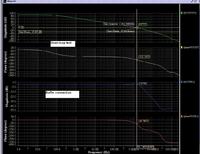Junus2012
Advanced Member level 5
Dear friends
I am trying to compare the ohase margin I usually simulate from the open loop with the phase margin that I wanna find from the buffer connection.
from the basic difintion of the phase margin, it is the difference in the output phase from 180 at when the GBW=0 dB. As you can see from the image I attached the phase margin is different from the two setting unless if I am wrong
looking forward for you reply
Regards

I am trying to compare the ohase margin I usually simulate from the open loop with the phase margin that I wanna find from the buffer connection.
from the basic difintion of the phase margin, it is the difference in the output phase from 180 at when the GBW=0 dB. As you can see from the image I attached the phase margin is different from the two setting unless if I am wrong
looking forward for you reply
Regards
